NO RESERVE - Famous Designer - HUGE INTERIOR Shoal Draft -Island Charter Cruiser
1976 William H Trip Jr. Design - Triple Cabin Columbia built Coronado 35 Center Cockpit
| Make: | William H Trip Jr. Design - Triple Cabin |
| Model: | Columbia built Coronado 35 Center Cockpit |
| Type: | Sloop Charter Cruiser |
| Year: | 1976 |
| Location: | Annapolis, Maryland, United States |
| Want to buy? | Contact seller! |
Description
Designed by Famous Yacht designer Bill Trip Jr., these boats were one of the most popular designs for Island Charter Cruising in the under 40 foot class ever built. Lightweight and fast early design racer cruiser, these boats sail very well and are still very tough boats of the "classic plastic" era, built much more solidly than the far more expensive boats of the 1990s and early 2000s.PAYMENT IS DUE WITHIN 24 HOURS. PLEASE BID ONLY WHAT YOU HAVE ON HAND TO SPEND AND DISCUSS SUCH IMPORTANT DECISIONS WITH YOUR SPOUSE OR OTHER BOAT PARTNERS. IF YOU ARE THE HIGH BIDDER PLEASE CALL ME IMMEDIATELY AFTER THE AUCTION IS OVER TO DISCUSS THE DETAILS OF THE TRANSACTION. THANKS. William 970 319-4361
Because these were so popular for the charter business, many of them were built, which means there are a lot of parts available still and a large global community of Coronado 35 boat owners who have web forums, owners groups and tons of shared knowledge about how to restore these classic small ships.
The great thing about a Coronado 35 is that it handles as easily as any 35 foot sloop and you only have to pay slip fees and yard storage for a 35 foot boat, but practically speaking in terms of interior space, you are getting a boat that is as huge inside as most 42 foot to 45 foot yachts because the interior layout is so smart. Because there were so many made, these boats are also very affordable and prices and demand remain stable. You can find ones in rough shape on the web for under $20K and fully restored ones for only $25k to $40K. Just on the Sailboatlistings website and the Yachtworld site for instance there are thirteen for sale in varying conditions and prices.
You can check them out for even more ideas about interior finishing touches and owner tweaks and upgrades. Many of them have crossed large oceans also as evidenced by the fact that several of the ones for sale are in foreign ports. The one's I found quickly online include:
Cape Coral, Florida $24,900, Germany $44,524, Titusville Florida $19,500, Rockport Texas $18,000, Marina Del Rey California $17,500, Wilmington California $25,000, Seattle Washington $26,500, Portugal Europe $24,000, San Carlos Sonora Mexico $46,000, San Pedro, California $32,000, Huron Ohio $16,000, Newport Beach California $28,500, San Diego California $12,500.
The reason for that list is to demonstrate that if this boat sells for under $10K, even if you spend the money to get the motor rebuilt or replaced, you still have a really solid investment over the long term.
These boats were so popular because they combine all the best aspects of good performance with shallow draft for island sand beach sailing along with the most important feature, an ABSOLUTELY HUGE INTERIOR! The interior has two full double cabins complete with hanging closet lockers and cabinet drawers plus a huge center salon with comfortable benches on both sides of the cabin plus a good sized galley (kitchen) and a large bathroom with full standing shower. The headroom inside is comfortable for anyone shorter than NBA player height all throughout the boat. On many the center cockpit is owner modified with single sea bunk on one side and double berth on the other to enable the boat to sleep seven comfortably for large family charters. This one has not yet had that easy weekend modification, so it should be considered to be able to only sleep six until you make the modifications. If you want to make that upgrade I can draw out the plans for you how to do it. The center cockpit combined with with wide beam and raised decks are what makes all the interior space possible. The Coronado layout is even better than other similar size center-cockpit designs of the same era, such as the Gulfstar 36 and Morgan Out Island 36, because in the Coronado 35 you can actually walk all the way from the front of the boat back to the aft cabin without having to go up on deck.
Boat includes a handy hard-shell fiberglass dingy that you need for serious cruising to get back and forth from the boat when you are anchored out or on a mooring. You can use oars for it or get a little outboard motor. The photo of the boat sailing is a sistership photo I grabbed off the web to show you what this boat looks like sailing. However, that one has the aft mizzen mast that makes it into a ketch rig. This one is just a sloop rig but could easily be turned into a ketch it you wanted to ad another mast. My wife and kids and I stayed on the boat for two months this summer enjoying the swimming pool, BBQ grills, nearby beaches, bars and fresh seafood restaurants, and good community of fellow sailors at the marina, but when we left the boat we weren't expecting to have to sell it. So there are a few personal items still on the boat that we need to retrieve after it is sold. We should be able to come and get them within a few weeks, but we are back at our land home in Colorado for a few more weeks.
Boat is located at a fantastic marina in the world capital of sailing, Annapolis Maryland. there are tons of resources in the area for used boat parts and spare sails etc. which make it a great place to restore a classic yacht. The marina has very nice showers, BBQ grills, dingy and kayak racks, Wifi, electricity and water at every slip and a fantastic swimming pool during summer months. It allows people to stay on there boats for long weekends and does even allow long term live-aboards if you pay a modest extra fee for the additional water and electric use. There are fabulous restaurants, bars, liquor store, super market and shopping accessible by a short bike ride or dingy ride. The slip fee is only $350 per month at that marina with all those services. If you want longer term storage, there is a place not far away that will store the boat on jack stands for an entire year for only $1050.
A bit about us who are selling the boat. My wife and I have two kids and we are passionate cruisers with many years of sailing behind us and in front of us. We are advocates for new faces just trying to get into serious ocean cruising and we love to help people learn how to restore a classic sailing vessel that is worth the effort to go cruising the islands without breaking the bank. When we find a boat that presents an incredible price opportunity for someone to get a serious vessel for far below market value we try to buy it and then work to find passionate new owners to complete the restoration and bring these classic cruising vessels back to life and take them back out onto the ocean where they belong. If you have questions about what sort of boat might be best for you, or how to allocate a very limited budget to be able to pursue the dream we are happy to have a chat and coach you toward achieving those goals. Feel free to give me a call if you have questions to ask or want to discuss the details of the cruising lifestyle. William 970 319-4361
Auction closes after midnight east coast time on Wednesday night. If you want to win the auction make sure to get your best bid in early or else stay up and set the alarm on your phone to tune in for the final few minutes of the auction.
And now here is a great little article about the gentleman who designed this boat. Enjoy:
Remembering Bill Tripp
Remembering Bill Tripp
His special knack made boats faster than their ratings
by Ted Jones
During the 1960s, William H. Tripp Jr. was one of America's most successful yacht designers, drawing custom ocean racers for a distinguished clientele and smaller boats for production builders like Seafarer and Columbia Yachts. His Bermuda 40 for the Henry R. Hinckley Co. is considered by many to be one of the prettiest boats of the fiberglass era.
|
Sadly, he died suddenly, in a car crash at just 51 years of age. Beyond his inclusion in Bill Robinson's The Great American Yacht Designers (1974) and the more recent collection (2005) by Lucia del Sol Knight and Daniel MacNaughton, The Encyclopedia of Yacht Designers, not much has been written about Bill Tripp.
I had the privilege of working with him for a number of years and counted him as a friend as well as a colleague. In 1958, while I was working for the yacht brokerage firm of John R. Lyon Inc. in Greenwich, Connecticut, I spotted an ad in Yachting magazine announcing the formation of the design/brokerage firm of Tripp & Campbell, with offices at 10 Rockefeller Plaza in New York City. I knew Bill Campbell but had never met Bill Tripp. I wrote a letter to Bill Campbell, congratulating him on his new venture. I received an immediate reply from Bill Tripp inviting me to visit their office. In very short order I began commuting to New York City to help Bill Campbell sell new and used boats.
Georjabelle and Touché
I knew Bill Tripp by reputation, of course. The 43-foot yawl he designed for Jasper H. Kane was skippered by my high-school classmate, Rod Oakes. Georjabelle was a lovely red-hulled centerboard yawl. But the boat that really got Bill noticed was Touché, a radical flush-decked 47-foot sloop designed for Jack Potter of Oyster Bay, Long Island. Touché had proven almost unbeatable in her early races on Long Island Sound. Because of his reputation for designing race-winning sailboats, prospective boatowners had begun beating a path to Bill's door. He also was one of the first yacht designers to make use of the then new boatbuilding material called fiberglass.
Bill's first fiberglass design was the 32-foot Galaxy for American Boatbuilding in East Greenwich, Rhode Island. But before the Galaxy could be built, a group of offshore sailors approached him to design a 40-foot fiberglass centerboard yawl, to be built by American Boatbuilding and known as the Block Island 40.
Of that first batch of BI 40s, I remember Swamp Yankee (#1), built for Van Allen Clark; Seal (#2), for Frederick J. Lorenzen; and Rhubarb (#3 or #4), for Ben DuPont. There were others, as well: Scylla for Sailmaker Charlie Ulmer; Reindeer (sloop rigged) for E. Newbold Smith; and Wahini for Pat O'Gorman. All did extremely well in the 1958 racing season and several entered the Bermuda Race of that year. Seal became infamous for taking a hunk out of the concrete dock at Pearlman & Watlington's in Bermuda without so much as a scratch to her (or so the legend goes). I often sailed aboard Seal with Fred and Dottie Lorenzen after the 1958 Bermuda Race.
Since fiberglass was a new and untried material, Bill Tripp specified a hull layup fit for a Sherman tank. The first BI 40s were reported to have 2-inch thick fiberglass in parts of the hull. The cost of production and other factors put American Boatbuilding out of business, but not before they returned to the original 32-footer to build several Tripp Galaxys.
The Galaxy was unusual for its time with a flush deck except for a "gun turret" rounded doghouse, wide beam, and wide plumb transom that "just didn't look right" to most traditionalists. It also had a fin keel and spade rudder. I believe she was the first of this configuration -- in contemporary boats -- predating Bill Lapworth's wonderful Cal 40 by several years. In the right hands, the Galaxy sailed very well.
|
When I moved to the seventh floor of 10 Rockefeller Plaza, we had two rooms at a snazzy address but a somewhat less-than-snazzy office. Bill Campbell and I occupied the smaller room. The larger room with the design and correspondence files was occupied by Bill Tripp, Walter Bleumhardt (his design assistant), and Mary Ryan, our secretary.
On the boards when I joined the firm was Sumner A. (Huey) Long's custom aluminum 57-foot Ondine, under construction at Jacobsen's Shipyard, Oyster Bay, Long Island; the production fiberglass Tripp 30, being built in Holland for Seafarer Yachts; and a 40-foot fiberglass yawl designed for a group of eight from Port Washington's Knickerbocker Yacht Club, to be built by the Henry R. Hinckley & Company in Maine. We were also about to take delivery of the first of three 32-foot wooden boats built in Norway. In honor of their heritage, we named these the Vineland class.
The Vineland was beamy and light, and the four-bunk/enclosed head/galley aft cabin arrangement was a bit cramped. Prospective buyers complained about the lack of room in the head, on one occasion causing Bill, a tall, muscular man, to demonstrate that it was big enough by entering the head and closing the door. "But could you get your pants down?" the prospect wanted to know.
OndineBill was often asked to sail aboard his designs. He was an excellent helmsman and sail trimmer, and his presence always seemed to make the boat sail faster.
Ondine was launched in the spring of 1959. Bill had made frequent inspection trips and had dealt with a few problems, one of which was the significant expansion and contraction of the aluminum plates as they were welded into the hull, the boat getting alternately longer and shorter in the process, although apparently things ended up where intended.
She was an immediate success and was campaigned in prestigious ocean races all over the world. Her professional captain was Sven Joffs, who seemed to prefer being at sea to being on land. In the first couple of seasons, Sven and a young crew sailed Ondine 30,000 miles as she went from the Bermuda Race to the SORC to the Sydney-Hobart Race in Australia and back.
|
Bill and I sailed the last part of one SORC race aboard Ondine with an all-star crew: Bobby Symonette, from Nassau; Dick Bertram of Bertram Yachts fame; English ocean-racer owner Dennis Miller; and Carter Sales from Detroit, along with professionals Joffs and Dick Grosmiller.
In those days, the Lipton Cup Race was a triangular course from the Miami sea buoy to a vessel trying to maintain station by steaming southward into the Gulf Stream. These were pre-GPS days, and many racers were sure the mark boat would speed up just before they got to it, putting them at a disadvantage. From the middle of the Gulf Stream the course headed back toward the shoreline to a sea buoy off Baker's Haulover between Miami and Fort Lauderdale, and finally back to the Miami sea buoy.
Tight reachThe first leg this day was a very tight port-tack reach. We were in the lead soon after the start, and Huey ordered the spinnaker set. Bill argued that it would overpower the boat and that we should stay with the genoa. Huey was the owner, so we attempted to set the chute. It went up almost to the top of the masthead and then filled prematurely. Ondine heeled sharply, and Bobby Symonette, who was hauling on the halyard, was thrown to leeward and the halyard promptly peeled off the winch. Wisely, Bobby let go. The spinnaker streamed out to leeward until the bitter end of the halyard stopped in the deck block, then fell into the water to leeward. Ondine went from 10 knots to 2 as the spinnaker billowed out in the water, tethered by the halyard at the masthead and sheet and guy from the deck.
The halyard was cut at the deck, but no amount of hauling would bring the sail aboard. Meanwhile, we were caught and passed by our nearest competitors. This was too much for Huey so he ordered the sheet cut to cast the sail loose (it was later picked up by a spectator boat).
"Set another one!" Huey ordered. Again Bill objected, but again the owner prevailed.
This one went up and drew well; we were able to hold off those behind and were no longer losing ground on our rivals ahead.
About 2 miles from the turning mark, this spinnaker split from luff to luff with a loud bang, and we scrambled to get its remnants on deck.
"Set another one!" Huey demanded.
This time Bill prevailed. "Huey, we only have one spinnaker left and only a couple of miles to the mark. We'll need the last chute for the run to the finish."
We rounded the mark second, sailed by the lead boat on the close fetch to Baker's Haulover, rounded that, and set the last spinnaker we had aboard to roll down to the finish. Ondine was first to finish and first on corrected time in class and fleet. The next day a marvelous aerial photo appeared in the Miami Herald showing Ondine towing her spinnaker through the Gulf Stream.
JavelinWhen pressed to meet a builder's deadline, Bill would work undisturbed at home. There were distractions in the office at "10 Rock," but there were advantages also. A printing company in the basement handled our printing needs. Messenger service was summoned by a phone call. Bill's full-size drawings were returned with copies within an hour.
The Seafarer 38 Javelin was one for which Bill had difficulty meeting plans deadlines. He had a lot of design work --- production boats for Seafarer, Hinckley, Pearson, and others -- and custom racing cruisers for individual clients. I think the Javelin is Bill Tripp's best design of that period. It is certainly a very attractive boat and a fast sailer with a very good CCA rating.
|
The first one to be delivered was Soufflé for Talbott and Polly Baker, to be raced by the Baker sons, Nick and Toby. I sailed aboard Soufflé with the sons in the season's first race on Long Island Sound -- the Edlu Trophy Race from Larchmont around Six Mile Reef buoy and return. Everything was new and unfamiliar, but Nick managed a good downwind start and we set the spinnaker for the long run to Six Mile Reef. We were flying. However, when we rounded the buoy for the return leg on the wind, Soufflé laid over on her side and couldn't carry a reasonable amount of sail. Something was clearly wrong. We made the best of a bad situation by close reaching to the Connecticut shore to smooth water and then close reached in its lee on one tack back to Larchmont. Considering our difficulties, we had a respectable finish somewhere near the top four of our class.
More ballastAfter considerable Monday morning head scratching back at the office and lots of work with slide rules, Bill suggested adding 900 pounds of lead in the sump behind the keel. He asked Bob Derecktor to install it before the Block Island Race the following weekend.
The following week we heard from Polly Baker that they were giving the boat back. She didn't want her sons sailing what she considered to be an unsafe boat. There was also an allegation that the hull was too thin, so Bill asked me to cut 4-inch square samples from each side of the hull just above the waterline. He sent these to Underwriter's Laboratory for analysis. The returned samples, in which the resin had been burned off, showed the laminate schedule was exactly as specified and that the resin-to-glass ratio was ideal -- better than most contemporary U.S. builders were achieving.
I had the feeling that Nick and Toby wanted to keep the boat, but Polly would not have it. Bill Campbell insisted that they couldn't simply "give it back" but agreed to fix it at company expense and then sell it without charging a commission.
Soufflé was eventually purchased by industrial designer Walter Dorwin Teague, who cruised and raced her happily for many years. She was ultimately driven ashore at Jamestown, Rhode Island, in a storm and was wrecked beyond repair.
The reason for the light ballast was never determined, the builder insisting he had followed the designer's specifications. It had to be a miscalculation of volume by Bill Tripp, an error in making the pattern by the builder, or their use of an alloy with a lower specific gravity than lead. Whatever the reason, all Javelins subsequent to Soufflé had 900 pounds or more added to the sump tank aft of the external ballast keel.
|
The Invicta was an unusual 37-foot yawl Bill designed for Pearson Yachts. The Invicta was a departure from other Tripp centerboarders in several ways, being flush-decked with a turret doghouse and a wide keel box below the cabin sole into which the engine was fitted entirely below the sole. The keel was relatively deeper than other Tripp centerboarders, the Invicta drawing 5 feet with the board up as opposed to the Block Island or Bermuda 40's draft of 4 feet board up. Not many Invictas were built, but one became famous for winning the Bermuda Race in 1968. Burgoo was the smallest yacht -- at 25 feet waterline length -- ever to win and the last to do so. Subsequently, the rule was changed to increase the minimum size so Burgoo could never compete again.
I always liked the Invicta in its original configuration, which was way ahead of its time. All of its unusual features make it a very capable cruising boat in an economical size. Headroom under the doghouse and on top of the engine is close to 7 feet, which gives the main saloon a very open feeling. I expect later owners have found ways to install a small diesel where the Atomic 4 once lived without having to raise the cabin sole enough to compromise headroom.
MedalistBefore joining Tripp & Campbell, I had sold Dick Sheehan an Ohlson 35. Dick subsequently became president of U.S. Yachts, a subsidiary of O'Day, and became the Ohlson distributor. He expressed an interest in a fiberglass boat of 33 feet to add to the line and wanted to discuss his ideas with Bill. Dick was adamant that he didn't want a boat like the Vineland, which he disliked. But that's exactly what he got. Bill trusted the basic design of the Vineland and gave the new boat the same underwater shape but with raised freeboard and a flush deck with the "standard" Tripp turret doghouse.
Dick liked the boat (he never knew it was a "warmed over" Vineland), but he insisted that Bill redesign the doghouse. Several tries at making it longer and more streamlined weren't satisfactory. The final version had a pleasing line but didn't look right where it met the deck. Forward of the doghouse, up by the mast, Bill had drawn port and starboard Dorade boxes. I suggested to Bill that he connect the aft end of the Dorade box with the forward end of the doghouse. We made the extension a deck box for winch handles. It saved the day and U.S. Yachts commissioned Dolf LeComte to build Medalists in Holland.
Tripp 30 and Polaris 26Seafarer Yachts built the Tripp 30, the first of the Seafarer Tripp designs. It was a very popular boat with classic good looks. It was designed for the light winds of Long Island Sound. We raced Tripp 30 #2, owned by Seafarer's Brian Acworth, several times with success. I sailed the Vineyard Lightship Race with Bill as skipper and with Harry Molitor and Breck Marshall, who later went on to build the Marshall Catboats. It was a rough race for a little boat, but we beat all the other Tripp 30s.
Today, there are several Tripp 30s being maintained and restored by loving owners. Laura Watt, of Oakland, California, has a website, http://users.California.com/~lawatt/other/mouette.html, through which she keeps in touch with other Tripp 30 owners. No one can convince Laura that there is a better boat than her Mouette, (#15), which she lovingly maintains and sails on San Francisco Bay.
The Polaris was the third Tripp design for Seafarer. It was a nice 26-foot centerboarder with a trunk cabin that had a slight break into a small doghouse and good-looking varnished mahogany trim to separate the cabin sides from the deck, much like its sister Seafarer boats, the Tripp 30 and the 38-foot Javelin.
T/L 29 and Northeast 38
The "T" and "L" in the T/L 29 was for Tripp and Lentsch. In working with Holland's Gerard de Vries Lentsch on the Seafarer Tripp 30, designer and builder developed a rapport that led to collaboration on a new 30-footer. It was not another Tripp 30, as many have thought, but a totally new design with better all-around performance.
The Northeast 38 came about through the association with the builder selected for the Medalist, Dolf LeComte, who also built boats in Holland. The NE 38 was to the Javelin what the T/L 29 was to the Tripp 30: the same size and general configuration, but a totally different boat and, I think, a better one.
Bermuda 40 and Mercer 44I've saved these two fiberglass Tripp designs for last because they have the greatest longevity of any of Bill's designs. Both are available today from their builders, the Bermuda 40 by The Hinckley Company, and the Mercer 44 by Cape Cod Shipbuilding. These boats are no longer in regular production, but they can be ordered on a semi-custom basis.
|
The Bermuda 40 has a cult mystique about it. Its legendary cruising virtues defy logic. Used Bermuda 40s command a very high resale value, as much as five times their original cost. I think it is fair to say that the Bermuda 40 was responsible for the high esteem in which Hinckley yachts are held to this day.
I raced aboard George Moffett's Guinevere in the 1962 SORC and aboard Humphrey Simson's Kittiwake on many Long Island Sound races. We always finished well, but the Bermuda 40 is a CCA Rule design of the 1960s and does not fare well under later rating rules.
Still, with her quality construction, comfortable arrangement, and shoal draft of only 4 feet with the centerboard up, the Bermuda 40 has to be one of the all-time favorite cruising auxiliaries.
The Mercer 44 was so-named as she was built in Trenton, New Jersey -- Mercer County -- by Mercer Reinforced Plastics. This design is a flush-decked version of Georjabelle, gaining the additional foot of overall length through the higher freeboard. She has a well-proportioned doghouse on the otherwise flush deck.
Despite my lack of experience sailing on this design, I think it is Bill's best. I have known several of her owners, and all had high praise for the design. The additional 4 feet versus the Bermuda 40, plus the flush deck, gives the main cabin enhanced spaciousness and opens up the otherwise traditional layout. It has a head in which even Bill Tripp would have no difficulty disrobing and huge hanging lockers opposite. Mercer 44s do not appear on the used boat market very often because their owners love them.
The tooling was acquired by Cape Cod Shipbuilding after 1962 when Mercer had built six boats. Since then, Cape Cod has built eight more, including Synia in 1978 for Charles Struthers who cruised aboard her to Antarctica.
| "I think it is fair to say that the Bermuda 40 was responsible for the high esteem in which Hinckley yachts are held to this day. " |
After two years in the cramped quarters on the seventh floor at 10 Rockefeller Plaza, Bill Campbell leased new and larger space on the fifth floor. It had a large drafting room for Bill and his assistant, Alan Gurney, who had replaced Walter Bleumhardt. There were also three private offices and a reception area.
Bill Tripp was never really happy with his partnership with Bill Campbell. He dissolved the partnership and set up his own design firm out of his home in Port Washington. Alan Gurney and I stayed in New York with Bill Campbell, who took on Dick Sheehan as a partner, and we became Campbell/Sheehan. I left when Dick decided I was selling too many Ohlson 35s, leaving him little else to sell. We parted friends, however, and Dick arranged for an interview with Bob Carrick, editor of Popular Boating magazine, and I switched careers in 1962.
Bill Tripp, meanwhile, joined forces with George Post, who was very successful selling Tripp designs and brokerage boats. Bill finished the T/L 29 in Port Washington, and went on to design a new and larger 65-foot Ondine for Huey Long, and a near sistership, Blackfin, for a West Coast owner. A third, slightly larger sistership for James Mullins was under construction when the IOR was born and it proved to be outside the maximum size limits. She was built anyway but never raced.
First attemptBill continued to design production fiberglass auxiliaries, notably for Columbia Yachts. The best of these is the Columbia 50, Bill's first attempt to fit a fin keel/spade rudder combination on a conventional hull. Being built on the West Coast, the Columbia was most popular there.
Bill designed a pair of 43-footers for Columbia Yachts and their counterpart, Coronado Yachts, and also a 26-footer. These are like no Tripp designs before and, as with so many of his original designs, they took some getting used to.
I last saw Bill Tripp on the St. Francis Yacht Club's Stag Cruise in 1971. This cruise was billed as an introduction to the International Offshore Rule (the now infamous IOR). This was the first time I'd seen Bill since he left the Tripp & Campbell partnership.
A few months later came the shocking news that Bill had been killed by a drunk driver who lost control of his car on the Connecticut Turnpike, hurtled the divider, and smashed into Bill's Jaguar. The drunk survived; Bill Tripp did not.
| "The best of these is the Columbia 50, Bill's first attempt to fit a fin kneel/spade rudder combination on a conventional hull. " |
Bill's heritage remains as champion of the CCA Rule, with a special knack of making slow-appearing boats sail faster than their ratings. Perhaps he was fortunate, after all, to remain apart from the disaster that the IOR became.
Thinking back, I can see many innovations Bill's fertile imagination introduced. While he did not create the wide beam, shallow draft centerboarder (that credit goes to Olin Stephens with Finisterre), he surely refined the type to the extent that he became associated with centerboard racing/cruising boats.
The wide transom, low counter design of his boats' sterns were quite new in the late 1950s, causing many derisive comments among traditionalists, but I don't hear anyone laughing about the shape of the Bermuda 40's stern anymore.
Bill was the first to put portlights in the topsides (Touché and Ondine) as well as opening ports in cockpit sides to improve air circulation and communication below (Touché again). He popularized flush decks on small boats (Galaxy, Medalist, Invicta, Mercer 44), and set high standards in hull and rigging scantlings that have been proven over time. He designed boats to stay together under the most difficult circumstances. I cannot recall one of his designs ever being dismasted or suffering structural damage at sea.
Bill's son, Billy, was too young at the time of his father's death to be able to understand what it was that made his father's boat designs special, yet he has now exceeded his father in this specialized field.
Young Bill has become one of the world's leading yacht designers, with success and prestige his father could not have imagined. So the name Bill Tripp has a new meaning and commands new respect a half-century after William H. Tripp Jr. (the father) became prominent in the world of offshore racing sailboats.
|
|
Before becoming a boating magazine editor, Ted Jones' boating career included work at Tripp & Campbell, Campbell/Sheehan, and Minneford's Shipyard. His magazine work was primarily with Popular Boating and Coastal Cruising magazines. He's published seven books on sailing.
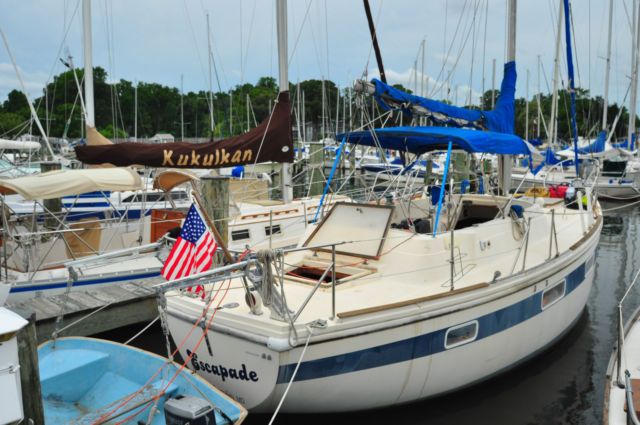
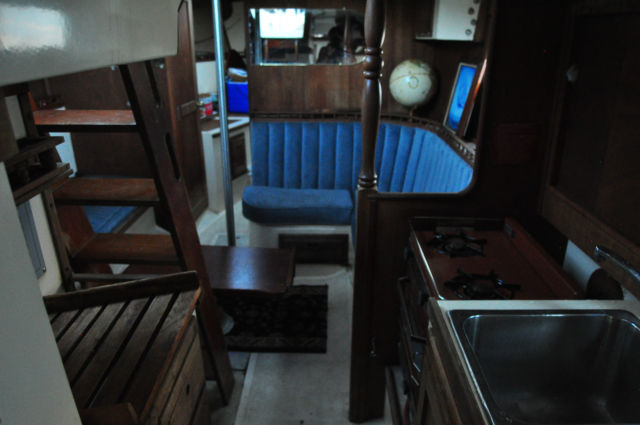
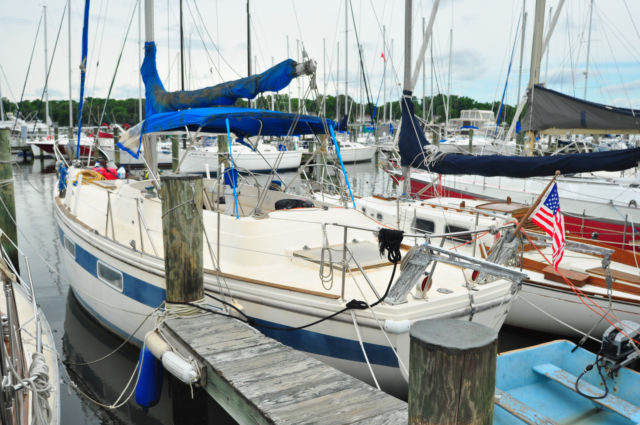
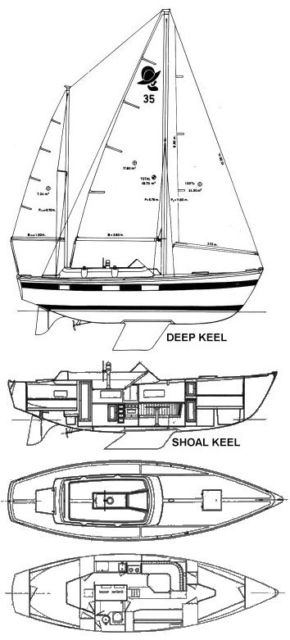
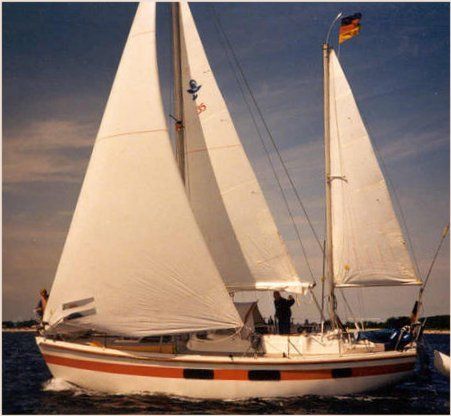
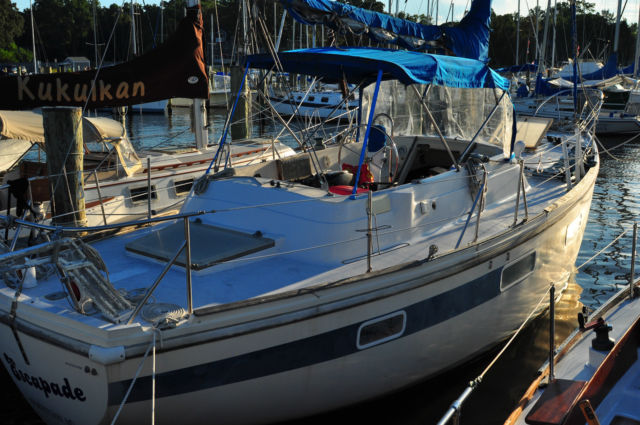
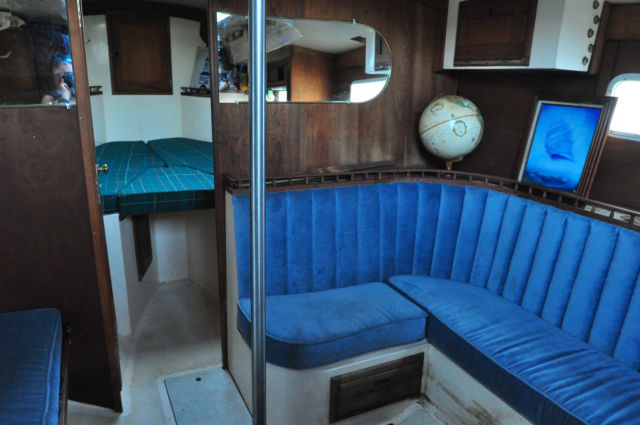
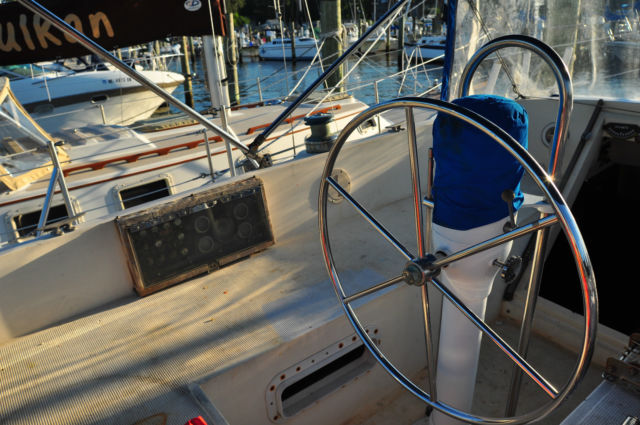

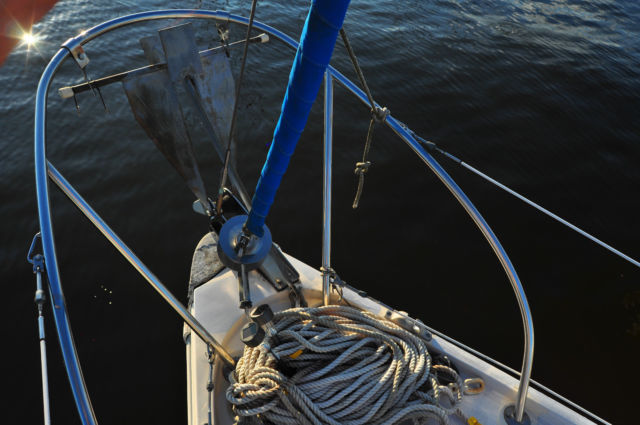
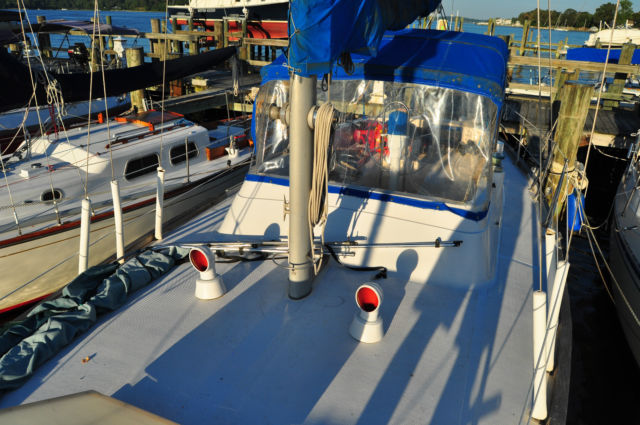
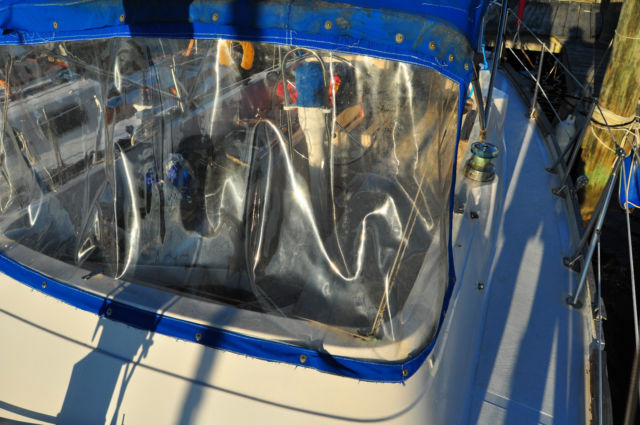
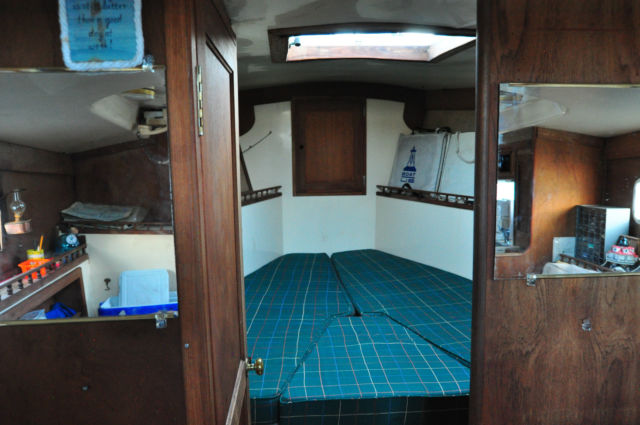
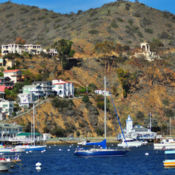 HUGE INTERIOR- GORGEOUS WORLD CRUISER in Mystical Island Paradise NO RESERVE
HUGE INTERIOR- GORGEOUS WORLD CRUISER in Mystical Island Paradise NO RESERVE
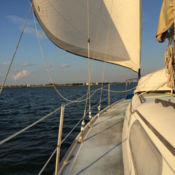 NO RES- FAMOUS DESIGNER-Very Seaworthy Classic Ocean Cruiser-SAIL TO THE ISLANDS
NO RES- FAMOUS DESIGNER-Very Seaworthy Classic Ocean Cruiser-SAIL TO THE ISLANDS
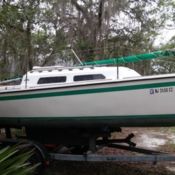 1977 O'Day 22 ft Sailboat -Shoal draft fixed keel. NO RESERVE
1977 O'Day 22 ft Sailboat -Shoal draft fixed keel. NO RESERVE
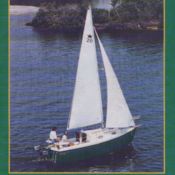 20' shoal draft sailboat
20' shoal draft sailboat
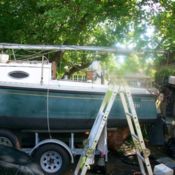 Sovereign 20' shoal draft sailboat
Sovereign 20' shoal draft sailboat
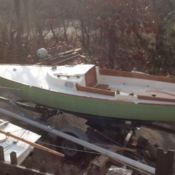 McVey Bluenose shoal draft sloop,
McVey Bluenose shoal draft sloop,
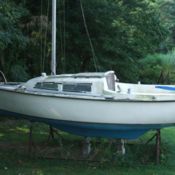 COLUMBIA 23 SHOAL DRAFT OVERNIGHT CRUISING SLOOP
COLUMBIA 23 SHOAL DRAFT OVERNIGHT CRUISING SLOOP
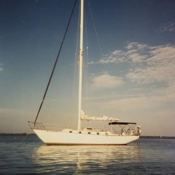 39 Horizon Shoal Draft Sloop Sailboat 1981
39 Horizon Shoal Draft Sloop Sailboat 1981
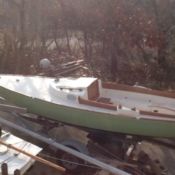 1986 McVay Blue Nose Sloop Shoal Draft
1986 McVay Blue Nose Sloop Shoal Draft
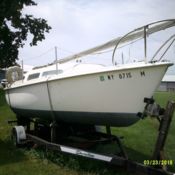 Very Nice 1975 Columbia 23 Shoal Draft Sailboat With Motor And Trailer Needs TLC
Very Nice 1975 Columbia 23 Shoal Draft Sailboat With Motor And Trailer Needs TLC